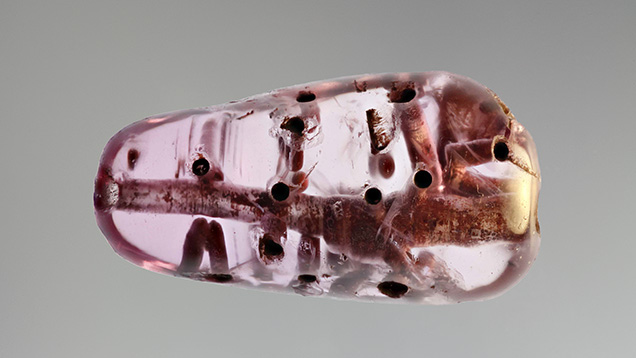Unusual Pink Sapphire Bead


Figure 2. Three of the drill holes, seen here using diffuse transmitted light and oblique fiber-optic illumination, contained a small ruby fragment identified by Raman analysis. Field of view 4.40 mm. Photomicrograph by Nathan Renfro.



